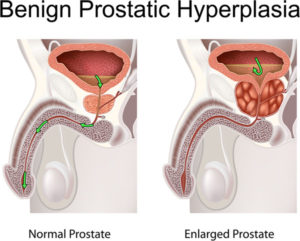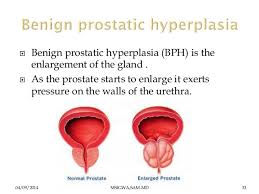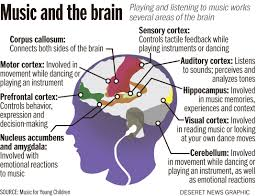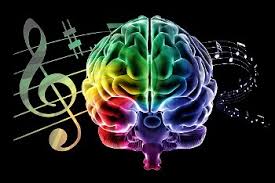Prostate Cancer — June Awareness is about MEN!
Prostate cancer is the second most common cancer among men, first is skin cancer.
African-American men are at the greatest risk to develop prostate cancer.
The American Cancer Society recommends men with an average risk of prostate cancer should begin the discussion about screening at age 50, while men with higher risk of prostate cancer should begin earlier.
Sexual health is a major overall health marker for men — 1 in 4 men will experience some form of sexual health concern by age 65.
Erectile dysfunction and lower testosterone are linked to larger health risks, including heart disease, high blood pressure-HBP, diabetes and obesity. Remember African Americans are high for blood pressure. Perhaps higher rates of obesity and diabetes place African Americans at greater risk for high blood pressure and heart disease. Researchers have also found that there may be a gene that makes African-Americans much more salt sensitive. This trait increases the risk of developing HBP. In people who have this gene, as little as one extra gram (half a teaspoon) of salt could raise blood pressure as much as five millimeters of mercury (mm Hg). Don’t forget bad diet, overweight to obese and sedentary life style play vital factors for getting HBP so on average it’s not just a gene factor but heredity does key in especially if you have disease (DM, Obese, Cardiac disease with HBP in the nuclear family especially).
BPH is monitored but there is no active treatment. Diet and medicine can control symptoms. You will have a yearly exam. Your health care provider will look for worse or new symptoms before beginning active treatment.
Why go to your health care provider? He will do a yearly exam looking for worse or new symptoms before beginning active treatment. Who should do this? Good candidates which are men with mild signs and symptoms of BPH, There are no side effects in having your doctor check you out. Just remember avoidance to the M.D. may make the situation to be harder to reduce your symptoms later on for not going to the M.D. yearly.
The cause of benign prostatic hyperplasia is not well understood; however, it occurs mainly in older men. Benign prostatic hyperplasia does not develop in men whose testicles were removed before puberty. For this reason, some researchers believe factors related to aging and the testicles may cause benign prostatic hyperplasia.
Throughout their lives, men produce testosterone, a male hormone, and small amounts of estrogen, a female hormone. As men age the amount of active testosterone in their blood decreases, which leaves a higher proportion of estrogen. Scientific studies have suggested that benign prostatic hyperplasia may occur because the higher proportion of estrogen within the prostate increases the activity of substances that promote prostate cell growth.
Another theory focuses on dihydrotestosterone (DHT), a male hormone that plays a role in prostate development and growth. Some research has indicated that even with a drop in blood testosterone levels, older men continue to produce and accumulate high levels of DHT in the prostate. This accumulation of DHT may encourage prostate cells to continue to grow. Scientists have noted that men who do not produce DHT do not develop benign prostatic hyperplasia.
Risk factors include aging and a family history of BPH. Other risk factors are obesity, lack of physical activity, and erectile dysfunction (ED).
Can BPH be prevented?
There is no sure way to prevent BPH. Because excess body fat may affect hormone levels and cell growth, diet may play a role. Losing weight and eating a healthy diet, with fruits and vegetables, may help prevent BPH. Staying active also helps weight and hormone levels.
With BPH, the prostate gets larger. When it is enlarged, it can irritate or block the bladder. A common symptom of BPH is the need to urinate often. This can be every one to two hours, especially at night.
Other symptoms include:
- Feeling that the bladder is full, even right after urinating
- Feeling that urinating “can’t wait”
- Weak urine flow
- Dribbling of urine
- The need to stop and start urinating several times
- Trouble starting to urinate
- The need to push or strain to urinate
In severe cases, you might not be able to urinate at all. This is an emergency. It must be treated right away. It is foolish for someone to not get checked or treated since the condition like any other disease left untreated will only worsen and in time possibly kill you (Ex. CHF OR Diabetes OR even Obesity).
How Can BPH Affect Your Life?
In most men, BPH gets worse as you age. It can lead to bladder damage and infection. It can cause blood in the urine. It can even cause kidney damage. Men with BPH should get treated. Mild cases of BPH may need no treatment at all. In some cases, minimally invasive procedures that do not require anesthesia are good choices. And sometimes a combination of medical treatments works best.
Transurethral resection of the prostate (TURP) is a type of prostate surgery done to relieve moderate to severe urinary symptoms caused by an enlarged prostate, a condition known as benign prostatic hyperplasia (BPH).
During TURP, a combined visual and surgical instrument (resectoscope) is inserted through the tip of your penis and into the tube that carries urine from your bladder (urethra). The urethra is surrounded by the prostate. Using the resectoscope, your doctor trims away excess prostate tissue that’s blocking urine flow and increases the size of the channel that allows you to empty your bladder.
TURP is one of the most effective options for treating urinary symptoms caused by BPH.
Other forms of surgeries (minimally invasive) are:
There are several types of minimally invasive procedures to choose from, they include:
- Prostatic Stent
- High Intensity Focused Ultrasound (HIFU)
- Holmium Laser Enucleation of Prostate (HoLEP)
- Interstitial Laser Coagulation (ILC)
- Transurethral Electroevaporation of The Prostate TUVP
- Transurethral Microwave Thermotherapy (TUMT)
- Transurethral Needle Ablation (TUNA)
- Photoselective Vaporization (PVP)
- UroLift
- Catheterization
- How do you know which is best for you GO to the M.D. (Urologist), whose the expert in making that decision. Guess what guys? Many less invasive procedures can be done right in the doctor’s office. So go find out if you’re having symptoms of BPH!



